Galleries
Two Young Women Took a Gamble and Opened an Art Gallery in Remote Kosovo. It Is Now One of the Most Talked-About Galleries in Europe
Last month, Lambalambdalambda opened its second space in Prishtina.
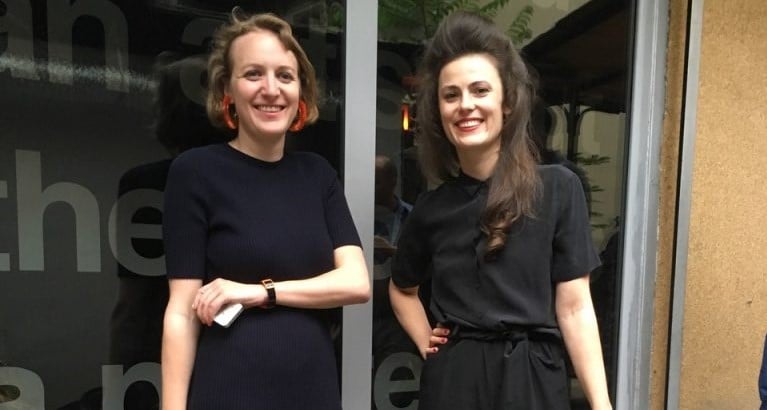
Last month, Lambalambdalambda opened its second space in Prishtina.

Hettie Judah

In late July, during the opening week of Manifesta 14 in Kosovo, the little alleyway that is home to LambdaLambdaLambda is abuzz with artists, curators, and press guzzling lentil fritters and drinking beer. The gallery is tucked into a back corner, next to the vegetarian café Babaghanoush: the de facto social hub for those visiting Prishtina for the biennial.
The café, which is run by two artists, was a deciding factor when Katharina Schendl and Isabella Ritter selected their tiny space. It was central, but hidden from view. When they first visited Prishtina together in 2014, the alley was also home to a book and record store, as well as a painter’s studio.
“We use it as an extended office and living room,” said Ritter, as we sat on an outdoor bench at an arm’s length from the falafel-fuelled hubbub. A collegiate sensibility is writ large in the gallery’s name: a playful riff on the Greek lettering used for sororities and fraternities in the U.S.
Schendl and Ritter are both Austrian, and have past careers in the Viennese art scene—Ritter worked in the commercial sector and Schendl was on staff at Mumok, the museum of modern art. What possessed them to open a gallery in a country with no collector base and no commercial scene? “There were no family ties, no romance, just a crazy idea,” said Ritter. “We had friends who were artists from Kosovo and the region—we realized it was amazing here.”
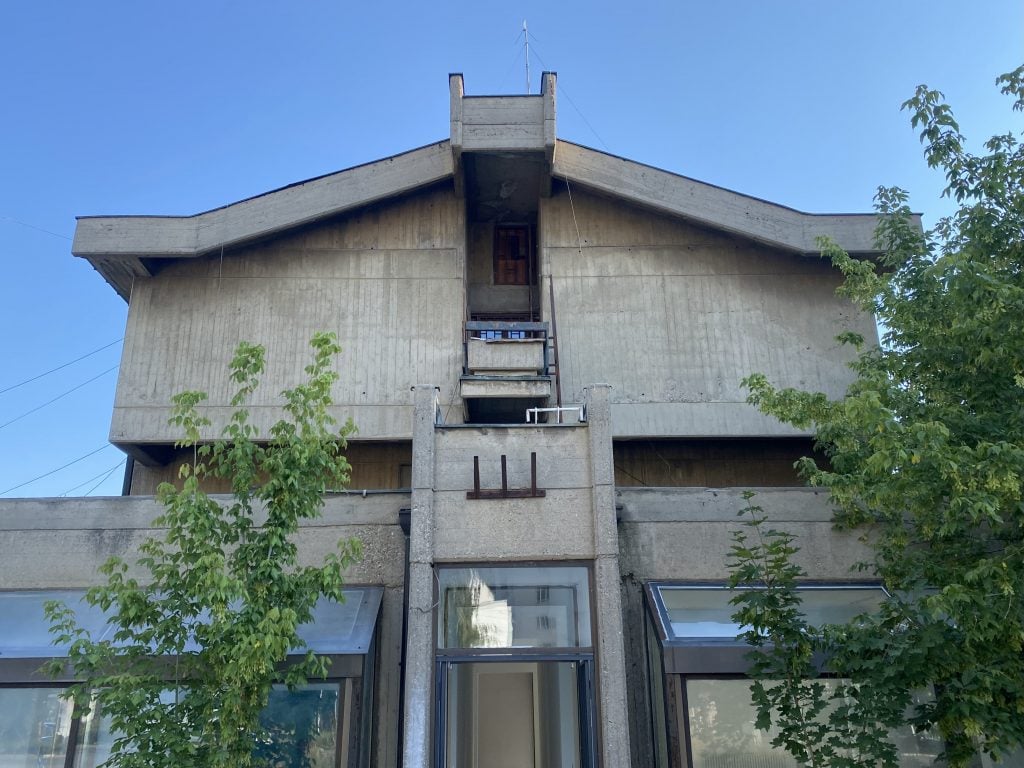
LambdaLambdaLambda², Prishtina. Photo credit: Rina Meta
Prishtina is a young city: over half the population is under 25. While there is “great energy,” Ritter noted that “young artists don’t have many opportunities.” The city lacks a permanent infrastructure “that allows artists to live from their art.”
Because of that, art practices are possible so long as graduates live with their parents, but as soon as they need to support themselves, they either stop entirely or try to squeeze art around a full-time job. “Our idea was to found a commercial gallery so that, for at least some artists, we can create a long term professional environment,” said the dealer.
The decision was impetuous: they committed to the space on that first trip in October 2014. The gallery opened the following January. Over the last seven years, they’ve presented 36 shows here of work by artists from Prishtina, the Balkans, and beyond.
Two years ago, they opened a space in Brussels called La Maison de Rendez-Vous in partnership with Misako & Rosen from Japan and Park View/ Paul Soto from Los Angeles. The launch of a second, 250 square meter (2,691 square foot) gallery in Prishtina has coincided with the start of Manifesta.
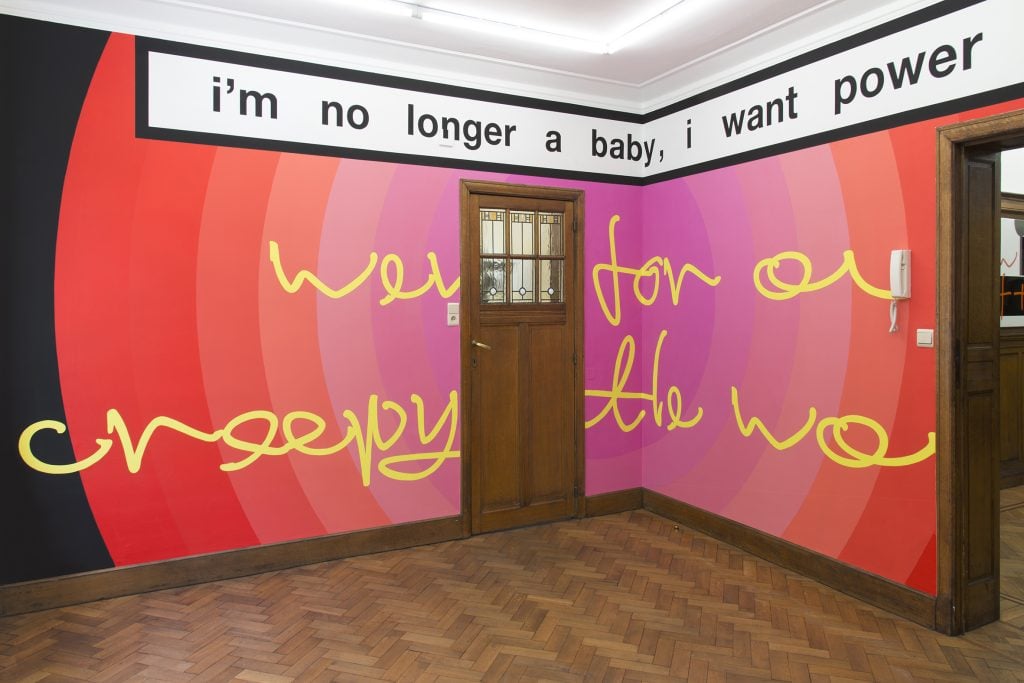
Nora Turato, “let’s never be like that”, organized by LambdaLambdaLambda, La Maison de Rendez-Vous, Brussels, 2020. Photo credit: Isabelle Arthuis.
This larger space is in a former office building—a brutalist structure with conservatory windows on three sides through which leaf-dappled light pours in. A stream of international visitors on the opening week of the biennial is testament to the international reputation LambdaLambdaLambda has built over the years.
Such footfall is atypical. Cultural life in Prishtina is event-driven. Exhibition openings draw big crowds from the local art scene, but casual visits to galleries are rare. Occasionally a group will travel to Kosovo from a European museum or Kunsthalle and pay a visit.
Ritter knew some collectors from her years in Vienna, but from the start it was clear that LambdaLambdaLambda would do almost all its commercial business through art fairs. This autumn the gallery will make its debut at Frieze London, but it has shown at fairs around the world. One of the first was Material Art Fair in Mexico City. At that time “nobody from Kosovo could go to Mexico because the country was not recognized. Now you can, but in 2016 that was not the case,” recalled Isabella. “So apart from art you start to speak about politics in a very interesting way.”
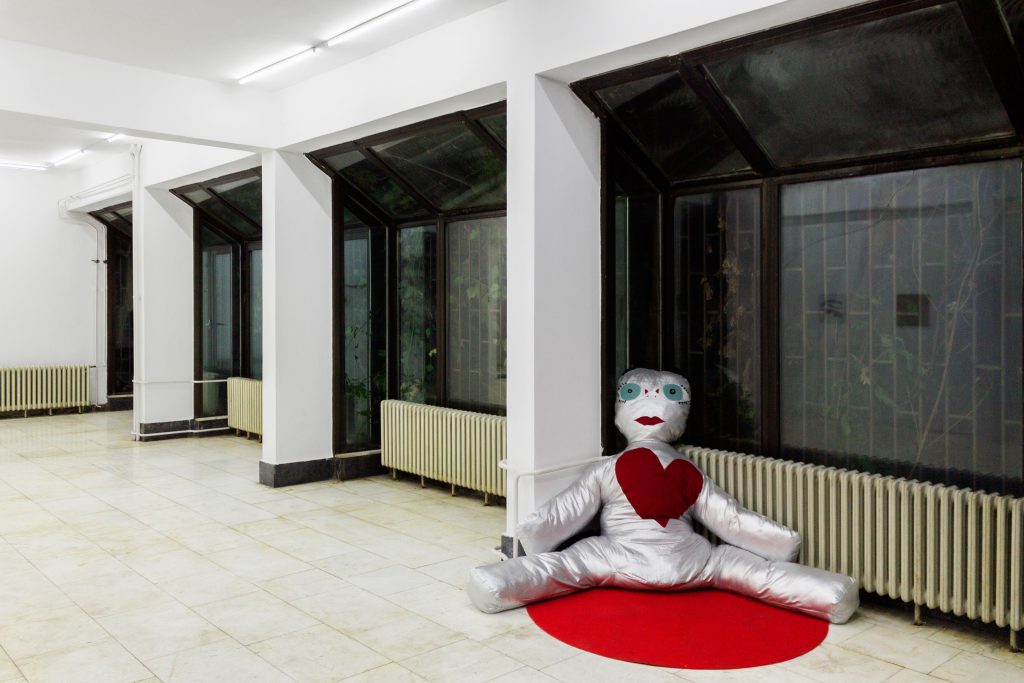
Exhibition view “Nothing like home II”, (with Blerta Hashani, Brilant Milazimi & Dardan Zhegrova), 2022. Photo credit: Leart Rama. Courtesy of the artist and LambdaLambdaLambda Prishtina/Brussels
Travel restrictions are a huge issue for Kosovo, and by extension for LambdaLambdaLambda and its artists. Nine years after the end of the Kosovo war, the state declared independence in 2008 from Serbia with the support of the U.S and established itself as a republic. Nevertheless, it remains unrecognized by a handful of countries, most with factional border issues of their own. Travelers must procure an expensive visa to go to the neighboring E.U., and application appointments were reduced during the pandemic.
That process is unpredictable: painter Brilant Milazimi, an artist in LambdaLambdaLambda’s program, was unable to attend his own opening at their Brussels location this May due to lack of a visa. Here, in part, is the answer as to why it took two Austrians to open the first commercial gallery in Prishtina: a Kosovo-born dealer could not travel to fairs, shows, and events with the ease required to keep the gallery commercially viable.
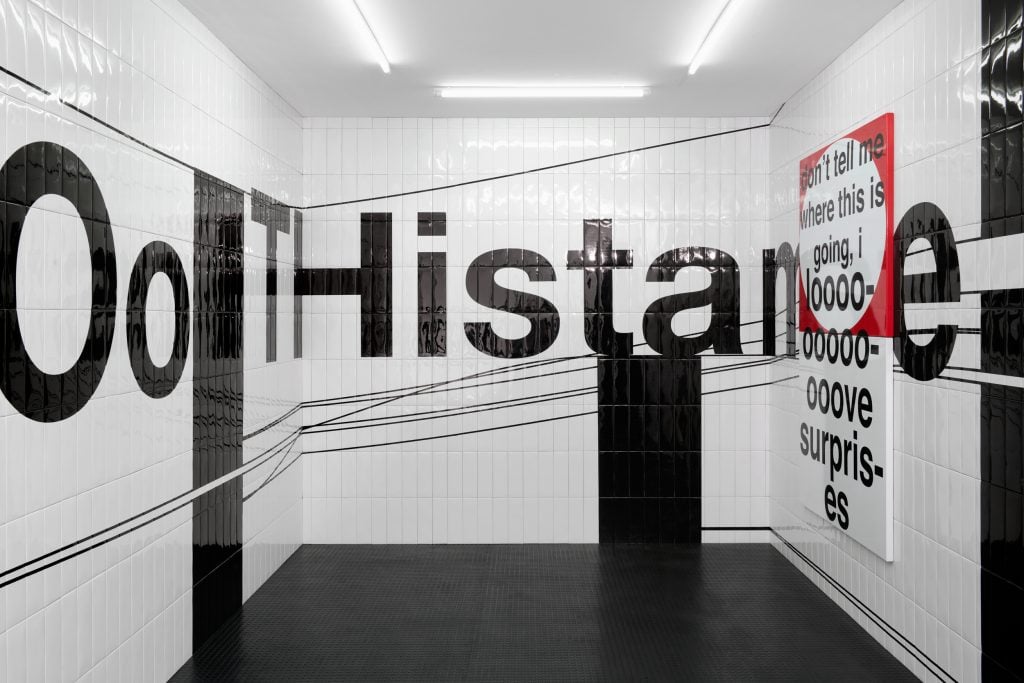
Exhibition view “don’t tell me where this is going, i loooo-ooooo-ooove surpris-es”, Nora Turato, 2021. Photo credit: Marcel Köhler. Courtesy of the artist and LambdaLambdaLambda Prishtina/Brussels
Three of the nine artists represented by the gallery are based in Kosovo, with most others from the Balkans and its diaspora. “We don’t only work with artists from Kosovo: it was important for us not to be ghetto-ized,” said Ritter. She and Schendl want LambdaLambdaLambda to be known for the strength of its program, rather than the “identity politics” of its artists.
This year’s edition of Manifesta is certainly a boost for the gallery: it has drawn international attention to Prishtina and its art scene. LambdaLambdaLambda’s artists are well represented in the exhibition: Performance artist Astrit Ismaili performed to a huge crowd on the opening night and painters Blerta Hashani and Milazimi were both selected for the central exhibition. Dardan Zhegrova, a self-taught sculptor of giant soft voodoo dolls which speak from the chest when embraced, are on view. Work by the latter three greets the crowds in their new space.
Currently, LambdaLambdaLambda is not so much a big fish in a small pond as the only fish. How would they feel if another gallery opened in Prishtina? “It would normalise the idea that people should buy art from commercial galleries because these galleries support the career of the artist,” enthused Schendl. “It would be amazing!”